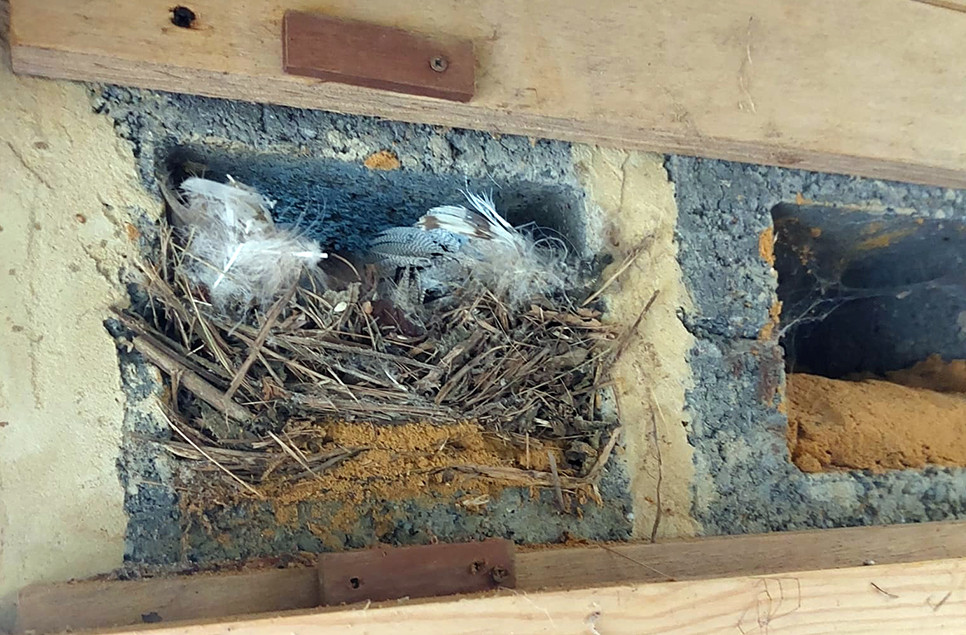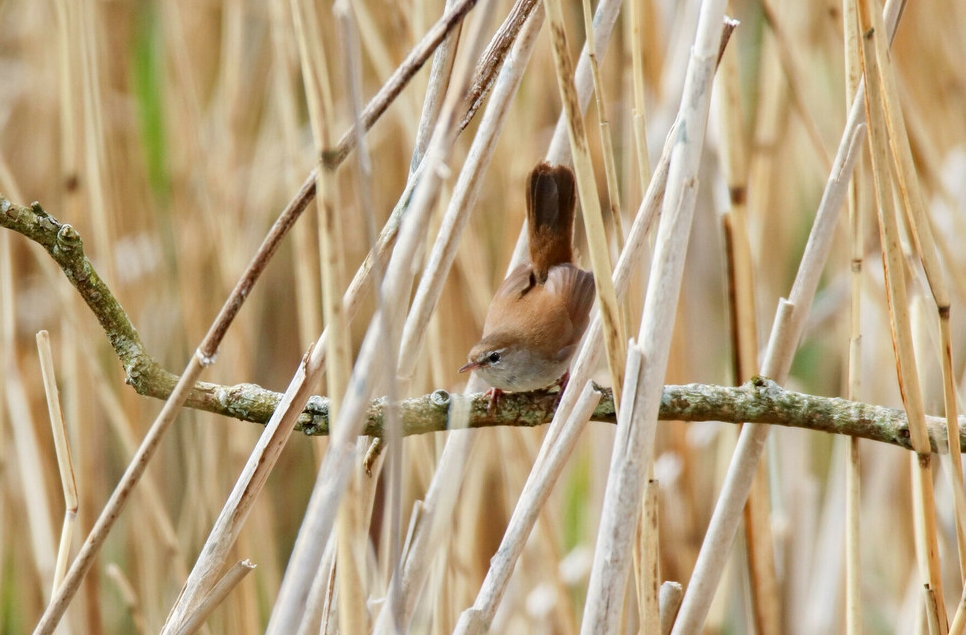Wetland wildlife to watch in early spring
Its the spring equinox on 20 March but spring behaviours began earlier with the weather setting the timetable: warmer days bring things forward while cooler temperatures slow them down.
By the time March goes out like a lamb, spring will definitely be underway with wildlife awakening throughout the wetlands.
Kingfishers on the lagoon
Kingfishers are onsite all year around but in early March the males chase each other to define their territories. Visit the Discovery hide to watch a pair who are active at the Kingfisher Bank on the Arun Riverlife lagoon again this year. They are nesting in Nest Hole number 5 . We expect these may kingfishers already be on eggs. Kingfisher incubation is about 20 days, with fledging in 25 days. The kingfisher usually have more than one brood a year.
The pair were spotted regularly fishing at the Scrape hide and at the Ramsar hide as well. Have a look as kingfishers perch and fish from the willows directly across from the hide.

A kingfisher male on a perch near the nesting bank this March, Photo by Mike Jerome
Swirls of Sand martins
In early April watch for swirls of sand martins moving through the site. In mixed flocks with house martins and swallows, the birds are now on their way northwards, returning from winter homes in Africa and Europe. The photo of sand martins at our Sand martin hide above was taken by visitor Chris Bishop and was the winning pic in our Waterlife Magazine's 2022 photo competition.
A record 17 sand martin nests were found in the left wing of the special nesting banks built into the Sand Martin hide during the annual checks in November, 2023. The Reserve team was delayed from checking the right wing of the hide due to hibernating brown long-eared bats inside the chamber this winter. The bats had moved on by March 20 and the team counted an additional 21 nests in the right bank. The amount of birds in our sand martin colony has been increasing for the past five years so we hope this number will build again this spring. Finding 38 nests in both banks means the martins nesting population almost doubled in size in a year!
Reserve Manager Suzi Lanaway said: “In 2022 we had 24 chambers used across both banks of the entire hide. Five of those nest chambers have been used every year for the past three years.”

The back view of a nest hole chamber in the Sand martin hide.
Lapwing behaviours
Lapwing have been displaying onsite since early February. Listen for the ‘slide-whistle’ calls of male lapwings on their tumbling display flights. The pairs will make shallow scrape nests in short vegetation offering them good sight lines to watch for predators. They lay four to five eggs, mottled to look like small stones.
Later in spring lapwing call loudly to warn their chicks of danger and to mob intruders. Look for lapwing from the Lapwing hide, the Ramsar hide and along the back of the Arun Riverlife lagoon.
Barn Owls pair
We have barn owls onsite year around using our owl boxes to roost in during the winter and for nesting in spring. The owls use the roof beams in the Lapwing and Ramsar to hunting from, leaving tell-tale owl whitewash and pellets. We will check our owl nest boxes in June for owlets when it’s ringing time.

Oystercatcher pairs
Keep an eye out for the two pairs of oyster catchers who nest here each spring. One pair has used the area near the Coastal Creek aviary for past three years. One pair like to nest on the roof of the Sand martin hide or amid the black-headed gull colony on one of the little islands nearby. Both pairs usually manage to fully rear at least one chick each.

March is ducky
Look out for clutches of newly hatched mallard ducklings along the edges of most waterways. Pochards will have paired up with the females disappearing looking for nesting spots. For the Last two years we have seen pochard parents raise ducklings on Pelican Cove!
Shoveler females also disappear with males predominately on the water. Greylag and Canada geese started holding territory in February so look for them on nests in late-March early April.

Look our for mallard ducklings along the edges of the waterways.
March chorus
Listen for spring singing from chiffchaffs and black caps - the loudest song and from all over the site will be the Cetti’s warblers and wrens. Great-spotted woodpecker often drum in Woodland Loop and we have been seeing one near the feeders at "Robin's Gate".
Huge numbers of gulls move through the reserve in March – common gulls, Mediterranean gulls and black-headed gulls. Most of these gulls will move on leaving us with about 100 black-headed gulls that nest here each spring and raise their chicks before departing mid-July.

Cettis warbler - hard to see, easy to hear - they are very loud!
Bees & Butterflies
Watch for peacock, brimstone and red admiral butterflies emerging on warmer days in March. They spend the winter as adult butterflies in a dormant state, tucked into the cracks in trees and buildings. Many other butterflies winter as caterpillars, a chrysalis or an egg, hatching or transforming into butterflies later in spring and summer.
Hairy-footed flowers bees hatch in early spring. These solitary bees nest in groups – look for them around the Sand martin hide. The females are all black and the males are red-brown with a whitish face.
Buff-tailed bumblebee and common carder bumble bees are early bees. They will be looking for looking for nectar on early flowering tree catkins. Other early spring flowers that are vital nectar sources for insects are marsh marigolds, red dead nettle, colt’s foot, lady smock and primroses.
Warm sunshine days will also bring out newly hatched bee flies – these striped furry flies with pretty patterned wings use a long proboscis for nectar.
Ready to visit?
If you've been inspired to explore Arundel Wetland Centre, find out more and plan your visit online.
Plan your visit